Technology
10 Best Photo Editing Apps for Personal and Business Use in 2026
Published
4 weeks agoon
By
Carmen Day
Are you looking to improve your photos? Whether you’re a business owner or simply a photography enthusiast, this list of the best photo editing apps will help you create stunning images with its exciting features and capabilities.
These apps have advanced capabilities that let you adjust specific elements of your photos and add effects beyond simple filters. They also have other nifty features, such as face recognition and auto-image correcting. With these photo-editing apps, you can take your picture game to the next level – no matter what kind of photo you have. You can edit professional images or the selfies you snap on your phone daily. Look no further for some of the best photo editing apps to give your photos that special touch.
1. Collage Maker
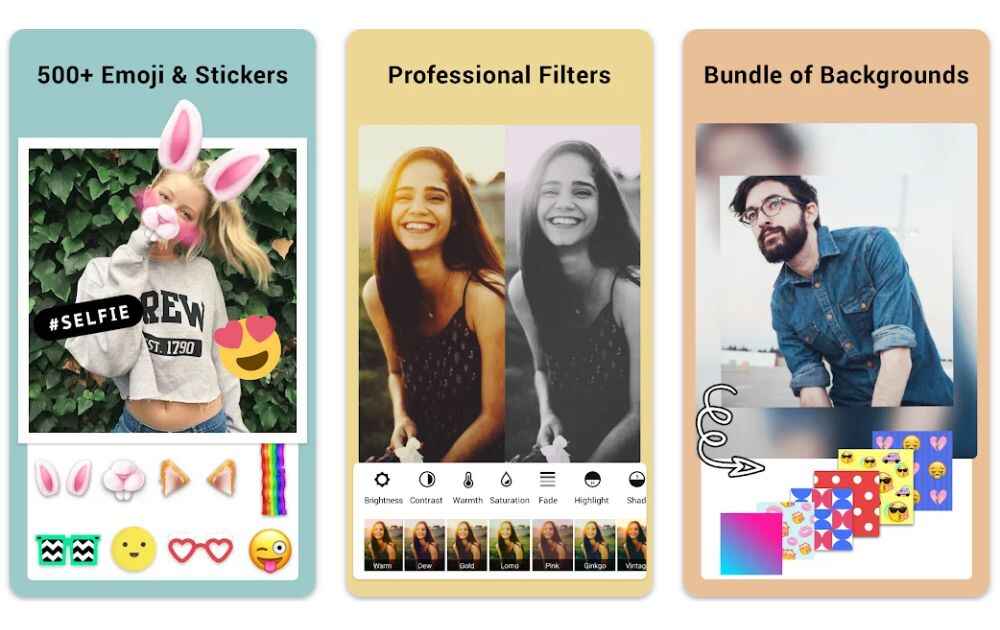
First on our list of photo editing apps is Collage Maker. This is one of those free photo editing apps built to allow the user to create a collage. It features hundreds of layouts, so you’ll have a wide array of choices for your project. In addition, you can also choose from a selection of exciting backgrounds and add text if you want.
It also offers basic photo editing tools, making it a photo editor and collage maker in one.
2. Visage Lab

If you need an editor that will make you look like you got eight hours of sleep after an all-nighter, download Visage Lab. This photo editor allows the user to retouch photos, including reducing oiliness, whitening teeth, smoothening skin, and many more. It’s an excellent app if you want to spruce up your selfies.
3. Picsart

Picsart offers reliable tools that allow users to create collages, change backgrounds, and many more. It also features hundreds of stylized filters, so you can find something to fit the look and mood you’re going for. Perhaps one of the best features of this app is it allows you to remove objects from the background, ridding your photo of any unwanted distractions.
4. Canva
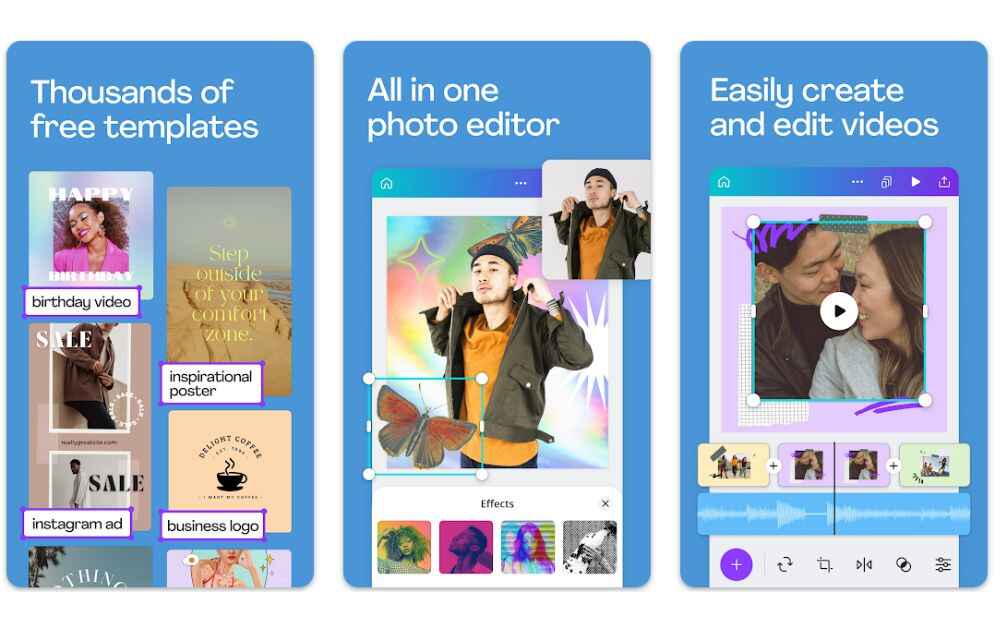
Canva is surely one of the best photo editing apps today. You can use this app to edit your photos using basic editing features. In addition, you can also use filters and vignettes to easily manipulate your image before you upload it on social media.
The best thing about this app is that it’s not just for photos. Because you can also use it for creating posters and other images, it’s an all-in-one app for your graphic design needs.
5. Bazaart
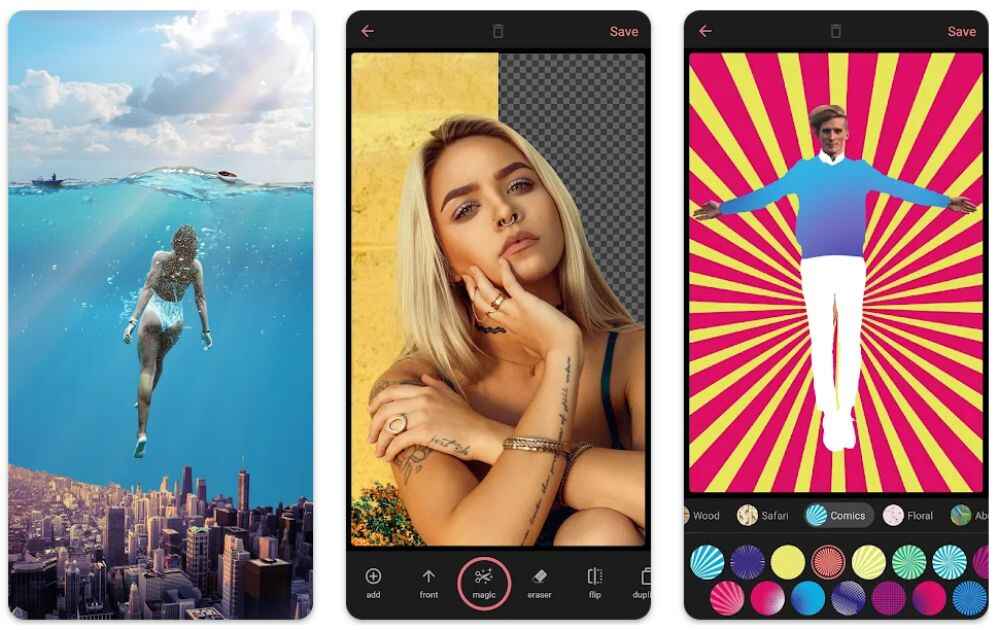
Bazaart offers unique effects and excellent design elements, allowing you to create artsy photos. You can use the app’s features to create images ranging from montages to surreal works of art. You can also use it to put text and other graphics on your photo.
6. Foodie
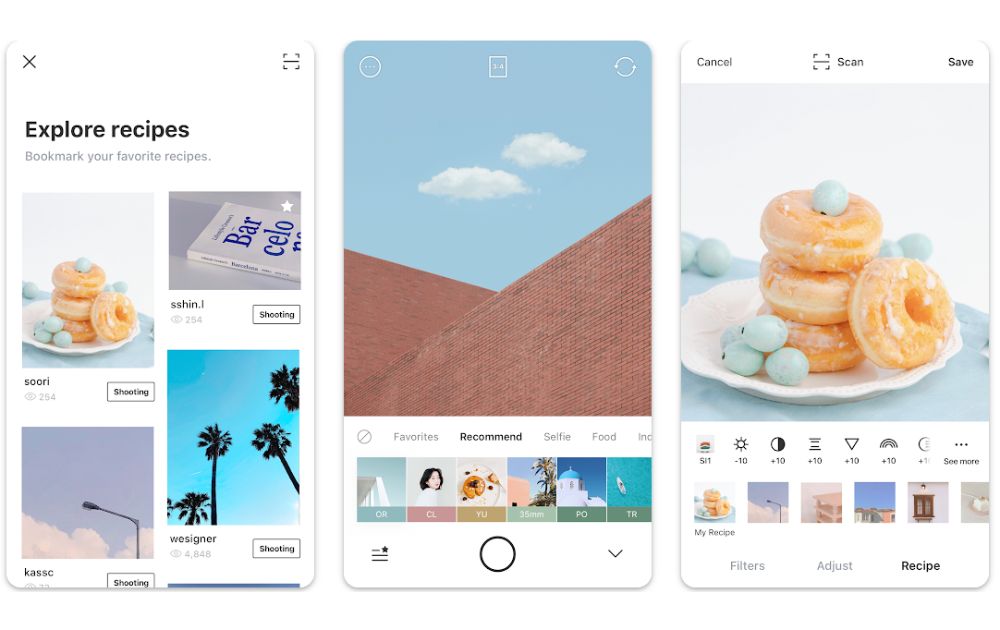
Do you like taking photos of your meals? If so, download Foodie. This is one of those photo editing apps free of charge, specially designed to create mouth-watering food photos. Now, a photo editing app designed specifically for food may sound weird. But try out their 30 filters on that coffee snap you have, and you’ll understand.
7. Focos
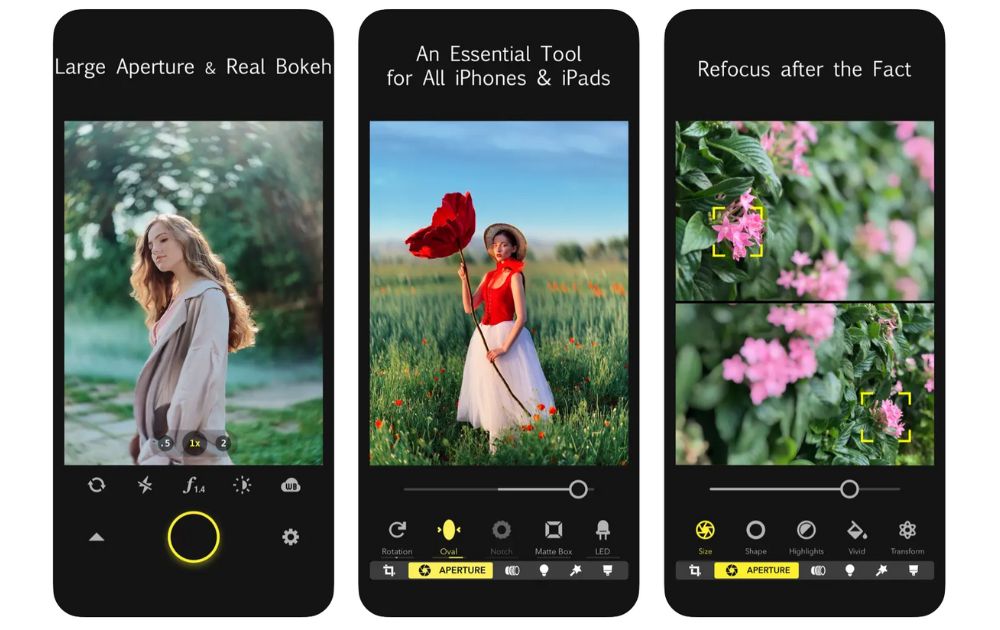
If you want your photos to look like they’ve been shot using a professional camera, try using Focos. This app mimics the look of fast lenses in DSLRs and mirrorless cameras, making pictures look sophisticated. For instance, you can edit a photo by selecting various aperture diaphragms, thus giving it a layer of directional lighting or bokeh effects. Users can also simulate lenses, ranging from reflex to swirly.
8. VSCO
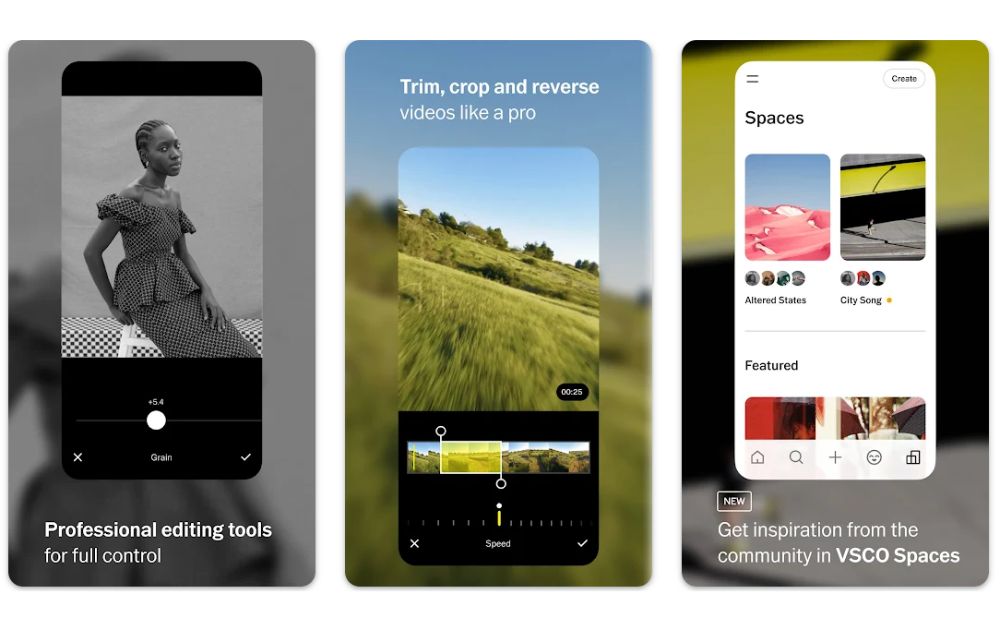
VSCO is one photo editing app that offers camera and editing tools, plus an online community. One thing that keeps users on this app is the awesome classic filters that make pictures appear as if they’ve been taken using a film camera. These filters are great to use if you want to make your photos look interesting without utilizing overused Instagram filters.
Aside from the filters, this app has basic editing tools, including cropping, vignettes, and contrast adjustment.
9. Snapseed App
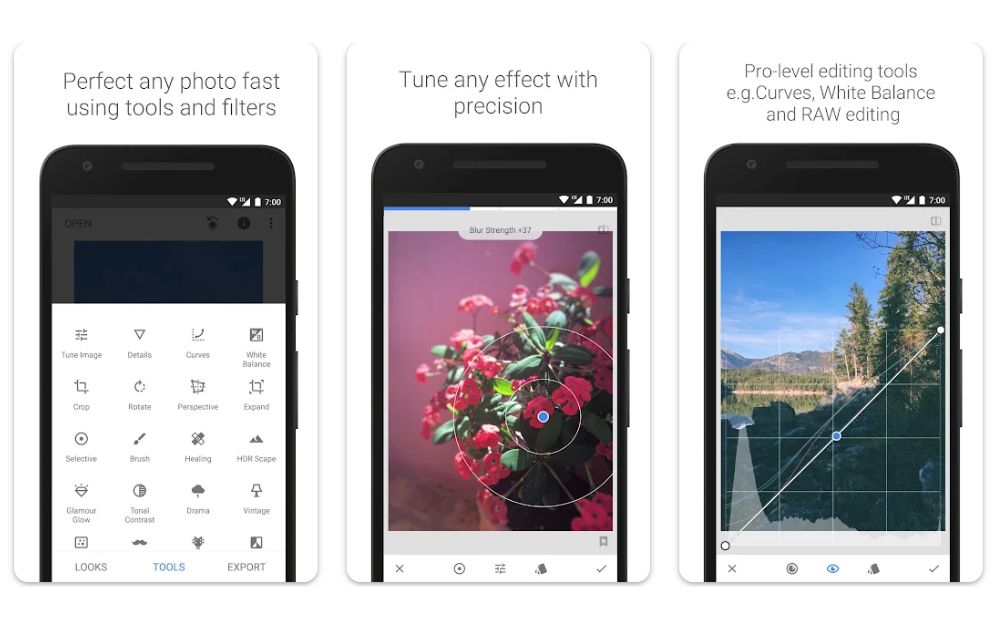
Also included in our list of photo editor app download options is Snapseed. This option has awesome features, making it powerful enough to compete with desktop photo editors. For instance, this app can create your own filters from scratch. It also offers classic tools, such as frames, straightening, cropping, and many more.
But if there’s one thing that makes this app stand out, it’s the precision masking, allowing users to modify the depth of field by blurring the background to focus on the foreground. It’s undoubtedly one way to make your photos look more professional.
10. Prisma Photo Editor
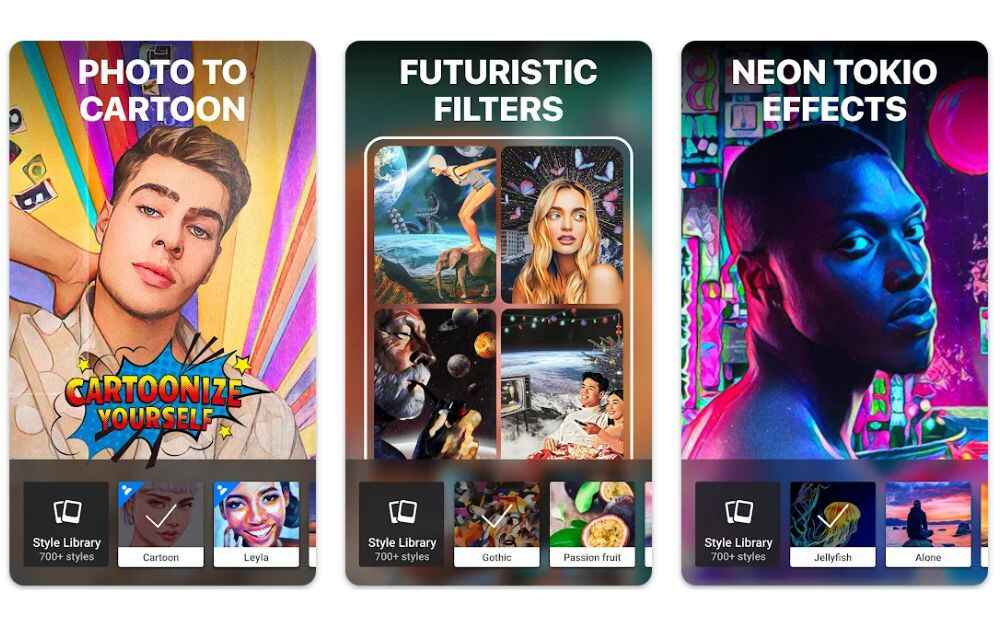
If you’re looking for an app that can turn your photos into artwork, check out Prisma Photo Editor. Available on Android and iOS, this app can transform images into drawings and paintings not far from the masterpieces of Dali, Picasso, and Munch. This app has over 500 creative filters, giving users a vast selection of options.
Tips for Choosing a Photo Editing App
Just like collaboration tools, it’s crucial to select a photo editing app that works for your needs. Now that you know what to look for in a photo editing app, you can start searching for the right one. Here are some tips for choosing the right one for you:
Compatibility
First, you’ll want to confirm that the app you’re interested in is compatible with your device. You’ll want to ensure that it’s compatible with Android and iOS devices. Remember, not all apps are available in both operating systems.
Ease of Use
You’ll also want to find an app that’s easy to use. You want to spend less time figuring out how to use the app. Choose an option with a user-friendly interface and good editing tools without being too complicated.
Features
Of course, you’ll want to find an app with the features you need. The first step is to determine what you’ll use it for. Would you mainly use the app for your Instagram food account, or would you need it to glamorize your selfies? Would you use the app to edit product photos for your business? Knowing what you need from the get-go will allow you to choose the right app that will cater to your needs.
You may like
Startup Central
10 Best Startup Software for 2026 Every New Business Should Use
Published
2 days agoon
December 4, 2025
Entrepreneurs put in significant effort to keep costs to a minimum, more so if you’re a new business owner. You want to save on everything by getting the most cost-effective options. This will allow them to do more with the limited budget they have. Here is a list of the top startup software you can use to begin the new year with optimum savings:
1. Hootsuite

An online presence is a necessity for new businesses. Hootsuite can help you create content and get more followers quickly and easily. It is one of the most popular startup software, with a user-friendly interface and affordable pricing plans.
It has a 30-day free trial that allows you to explore the platform. Not only that, Hootsuite will help you monitor the Return On Investment (ROI) of all your social media campaigns. This will let you know which works and which doesn’t. It has three premium plans that start at $149 per user per month, billed monthly.
2. Google Analytics
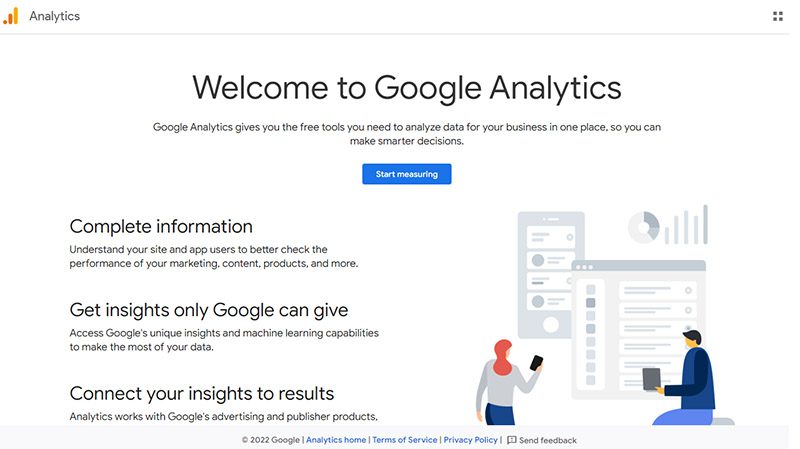
Understand your website better with Google Analytics. This startup software will let you track the traffic coming to your website. This will allow you to tweak whatever strategies you have in place, as it tells you what needs improvement.
You can use Google Analytics 4 (GA4) free of charge, but it comes with limitations such as data sampling, limited data retention, and fewer advanced features than its GA360 paid version (with costs that start at $50,000 per year). It will help you understand your customers’ journey and improve your marketing ROI. It will provide insightful data that can aid you with your marketing strategies.
3. SendPulse

Excellent communication with your customers helps build stronger connections and loyalty. Whatever messaging channel you choose, SendPulse is a superb startup software. It includes lead generation tools as well as promotional channels such as email, SMS, social media, and messenger chatbots. It also offers a free CRM tool and many other features.
SendPulse has a free plan ideal for startups, but if you want to upgrade, there are three premium plans to choose from. Prices start at $8 per month.
4. FreshBooks

Once your business is running, you’ll need an accounting and invoicing software. That’s when you’ll need FreshBooks, an app that automates invoicing, bookkeeping, payment tracking, and many other financial tasks. In just a few clicks, you can view your financial status through its Profit and Loss Statements (PLS) feature, do taxation summaries, and check expenditure reports.
FreshBooks offers four pricing plans, which start at $8.40 per month. If you need more services, they offer a custom plan, for which you’ll need to contact them for a quotation.
5. HubSpot CRM

Primarily a CRM (Customer/Contact Relationship Management ) tool, HubSpot CRM is a must-have startup software. It lets you manage contacts, sales, pipelines, lead generation, and digital marketing, among many others. It consists of multiple tools or ‘hubs’ that you can buy separately.
HubSpot CRM offers two pricing plans that start at $10 per month per seat. If you consider what this startup software can do, you’ll know it’s worth every penny.
6. Penji

Starting your business involves advertising and marketing. And to do this effectively, you’ll be needing graphic design. It can elevate your business in ways you can’t even imagine. For this, you need Penji, an unlimited graphic design service that lets you request all your visual assets.
For as little as $499 per month, you can request logos, digital ads, social media graphics, and many other branding collaterals. They have two other plans, plus a 30-day money-back guarantee that lets you decide without making a huge commitment.
7. Piktochart

According to statistics, infographics are the fourth most-used type of content marketing. They can increase traffic to your website by 12%. To create interesting and engaging infographics, you can use Piktochart. With this startup program, you can add videos, charts, interactive maps, and many other elements to your infographic and embed them on your website or blog.
Piktochart offers a free plan that’s suitable for startups and medium-sized businesses. If you want to enjoy more of its features, you can get any of its premium plans that start at $29 a month.
8. WordPress

Join the over 585 million websites that use WordPress, the world’s most popular website builder. It is an open-source content management system, which means it’s free to use. You can build the website of your dreams using this startup software’s plugin architecture and template system. It can help you create a website with responsive design, SEO, social sharing, and many other features.
Aside from the free plan, WordPress has four premium plans with pricing that starts at $9 per month and goes up to $70 a month if you pay monthly.
9. Salesflare

Another CRM tool ideal for startups, Salesflare automates many repetitive tasks to make handling your business easier and faster. It can help with your email applications, social media accounts, company calendars, and many other processes. It also provides you with crucial data such as sales funnel analysis, quota management, sales funnel analysis, and many others.
Salesflare offers simple and affordable pricing. It has three pricing plans that start at $39 per month and go up to $124 a month. It also has a free trial that lets you try the software without a credit card.
10. MailChimp

If you’re thinking of strategies to add to your marketing campaigns, you need to add email marketing. It is one of the most effective, but it can involve a laborious process. To make it easy, use MailChimp, a marketing platform that lets you manage and communicate with your clients, customers, and prospects. With it, you can customize your emails, generate leads for your database, and perform many other email-related tasks.
MailChimp has a free plan if you want to try out the service first. However, its three premium plans offer many valuable features you won’t get from the free plan.
Final Thoughts
Growing your business can be an exciting yet arduous endeavor. There is a multitude of concerns, issues, and tasks you need to take care of. Fortunately, there are startup software that you can get to make your life easier. Whether free or paid, these are absolutely helpful and worth looking into.

For brands without an in-house designer, unlimited graphic design services like Kimp are heaven-sent. But Kimp is just the tip of the iceberg. There are dozens of Kimp alternatives you can explore if you’re looking for a design-as-a-service provider that truly suits your needs.
Whether you’re looking for graphic design for infographics, branding design, or custom social media templates, here are the top graphic design companies worth exploring.
1. Penji

Penji is one of the Kimp alternatives that offers the best value for your every buck. Hiring only the top creatives, it gives you access to a wide range of design expertise and styles without costing an arm and a leg.
Features:
- Predictable pricing per month (Business plan costs lower than Kimp’s Graphics plan)
- Top 2% designers worldwide
- Turnaround time of 24-48 hours
- Uses a dedicated app for design requests, revisions, and delivery
- 30-day money-back guarantee
2. ManyPixels

ManyPixels, meanwhile, is another unlimited graphic design player that offers more tiers than most of its competitors. Unlike Kimp, which offers three plans ranging from $698.50 to $848.50, ManyPixels gives a wider range to choose from, ranging from $599 to $2,399.
Features:
- More plan tiers
- Real-time collaboration (for higher tiers)
- Motion graphics (for higher tiers)
3. Design Pickle

Also included in our Kimp alternatives list is Design Pickle. Known for being one of the earliest brands in the unlimited graphic design arena, this platform is popular among enterprises, but it also comes with a premium price tag.
Features:
- Motion graphics, on top of graphic design
- Hour-based structure
- Structured creative solutions
4. Design Shifu

Last but not least is Design Shifu, which is one of the most affordable design-as-a-service platforms today. Their lowest tier only costs $399 a month, but this plan doesn’t include custom illustrations, web design, and other more complex projects.
Features:
- Cheap rates starting at $399
- 14-day money-back guarantee
- Higher tiers include custom illustration and motion design
Featured Image Credit: Photo by Mikhail Nilov from Pexels
Technology
Top 10 Advertising Tools for Small and Large Businesses for 2026
Published
1 week agoon
November 26, 2025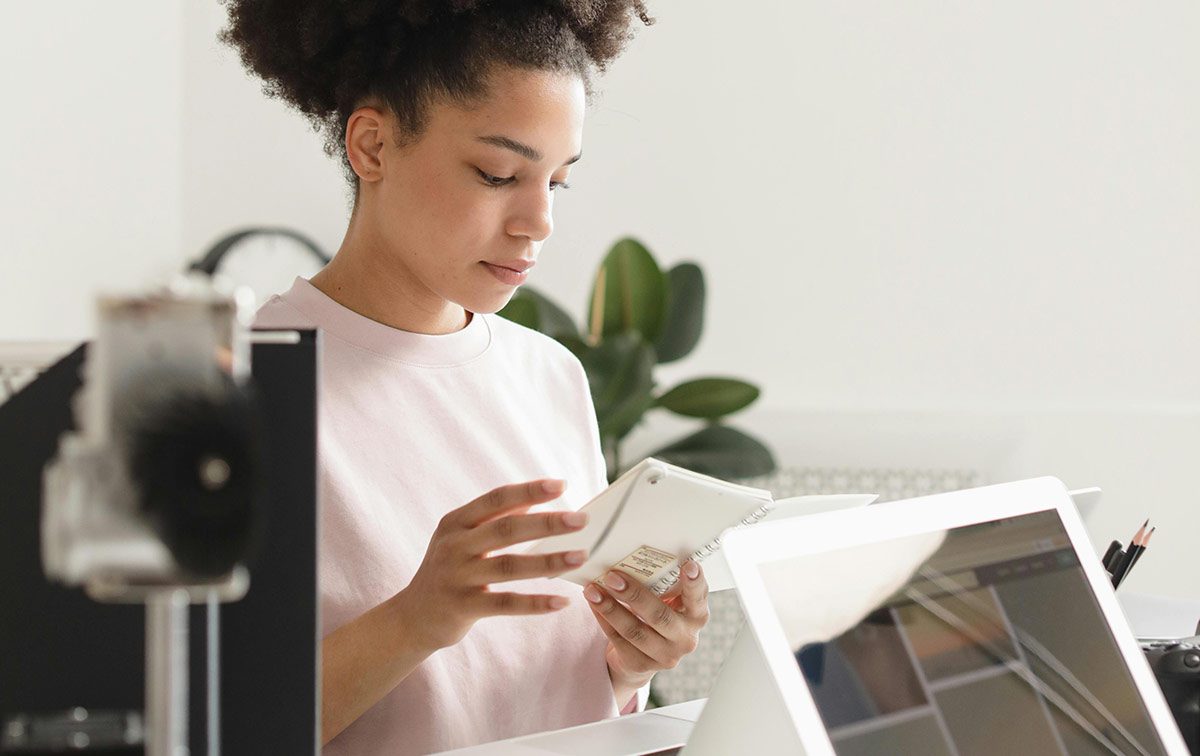
Business marketers who handle multiple accounts sure have a lot on their plates. They often tackle tedious tasks, including endless research, design, and performance analysis. Luckily for them, there are advertising tools that can help ease their work. Here are ten advertising tools you can use for running multiple online marketing campaigns:
Things You Should Know Before Choosing An Advertising Tool

Before we go into detail with the top ten best tools for advertising, it’s necessary to know the features that make them the most preferred choices. Below are the fundamental aspects you should consider before selecting a tool or software.
- Features
While some businesses may need an advertising tool that consolidates various applications, others may need a tool that supports their content marketing strategies. Understanding your business and choosing the appropriate tools helps you to achieve your goals and strategy.
- Pricing
Working within your budget ensures that you stay focused on your goals. It helps you monitor your income and make intelligent decisions on what you can achieve. For instance, if you are a small business looking for content marketing ideas, you choose tools with affordable pricing and those that allow for upgrades as you expand. The free trials are the best options for small businesses and those trying specific functions.
- Customer Support
It’s common to encounter bugs with online tools. In this case, your solution is connecting with a support team in the shortest possible time. If your service provider offers a round-the-clock customer support service, you’ll recover with almost zero adverse effects on your online advertising campaigns.
Here are the top ten advertising tools businesses can avail themselves in 2022:
1. AdRoll

Adroll offers an all-in-one solution for running display, social, and email ads necessary to grow your brand. The tool grants access to hundreds of platforms to keep you aware of your remarketing plans. Generally, you can use the data to personalize your emails and ads to attract high-converting audiences. The AI-driven suggestions also allow you to build a brand that customers will look forward to.
2. SurveyMonkey
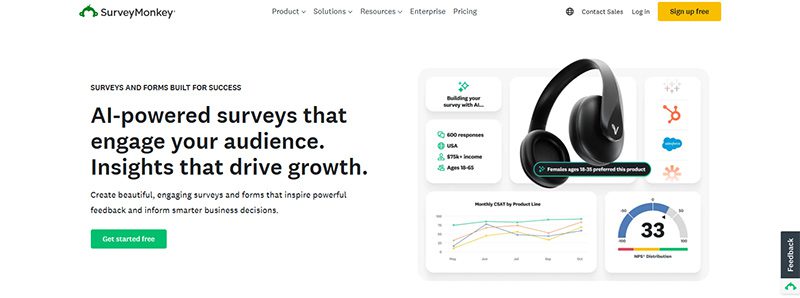
Sometimes, you’ll need to run a survey to understand the demographic profile of your diverse audience or to gather feedback from your marketing efforts. SurveyMonkey is the best tool for collecting data to help you make an informed decision.
Likewise, it can enable you to collect the information you need in the shortest time. That’s why SurveyMonkey is helpful for organizations interested in getting feedback from their marketing campaigns.
3. Sendible

Sendible has been supporting agencies managing multiple social media profiles. The software is built around collaboration and automates almost everything, making communication between teams more accessible. Additionally, Sendible has the “send for approval” feature for content that requires verification before posting.
Customer relationship management (CRM) is another exciting feature of Sendible. Sendible also tracks your hashtags and keywords on Twitter and sends automatic retweets and replies with links or content related to the customers’ content.
4. Buffer

If you are looking for a more efficient way of publishing content on social media platforms, Buffer is the best tool to adopt. It offers a one-place solution for publishing, scheduling, and managing social media posts and pages. This function promotes better management and engagement on all your social media channels.
5. HubSpot

HubSpot is a tool for creating responsive content strategies, wherein you can determine trending topics that help you improve your search engine rankings. Even more surprising is how the company considers the needs of online businesses. In fact, HubSpot is considered the number one CRM platform for growing businesses.
6. MailChimp

MailChimp mail marketing allows small and big organizations to conveniently manage their email messaging campaigns. Its AI-enabled features and competitive pricing enable you to create and manage ad marketing initiatives. In addition, it supports sending personalized email messages for your pay-per-click (PPC) marketing strategies.
7. Marketo

Marketo is an advertising tool that lets you build and strengthen business collaborations. It delivers excellent results by keeping customers engaged from when they interact with your brand until conversion.
Similarly, Marketo helps you leverage sales by tracking customer behavior across your platforms. It’s an advertising tool focusing on automation practices that attract the right customers and scale your marketing campaigns.
8. Vimeo
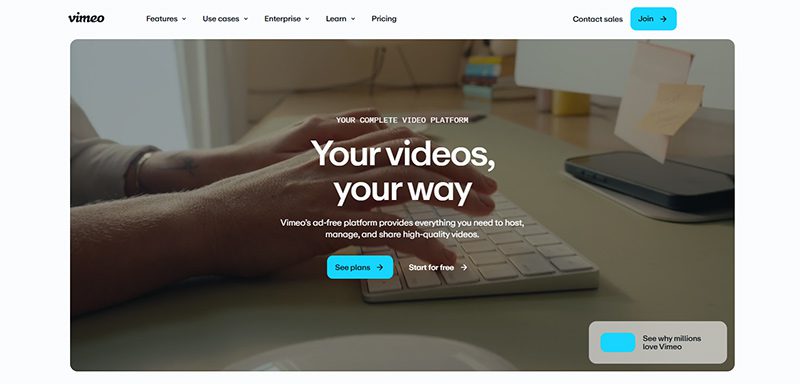
Vimeo, an ad-free site, allows people to create, manage, and share high-quality videos. It offers a platform to share professional videos that help you stand out. The analytics features that help you understand your videos’ performance are even more critical. The top three services of Vimeo include video marketing, employee communication, and video monetization.
9. LiveChat

LiveChat enables efficient and real-time communication on your website. The tool encourages potential customers to raise their concerns about your business and receive immediate responses. LiveChat helps attract more leads and convert more visitors because of its proactive approach to brand communications. The firm promises the shortest path to sales can be done through the following steps:
- Drive awareness and interest
- Collect and categorize leads
- Focus on opportunities.
- Close the sale
10. Google Analytics

If you aren’t using Google Analytics, you are missing out on competitor data that you can use to improve your rank in the SERPs. With this Google functionality, you can monitor landing pages, keywords, or content that competitors use to land in the top spots in the search results. More importantly, Google Analytics allows you to pick search categories. You can categorize audiences based on demographics, locations, and interests.
The Bottomline
To scale up your digital marketing efforts in 2026, you should choose tools that improve performance on various channels. Social media, website, and survey endeavors should benefit your industry tools. In short, go for the advertising tools that help you improve your marketing strategies.
The power path of Pinco Casino expands steadily over the 2025–2026 climb
Pinco Casino — a dominant platform throughout the 2025–2026 casino market in Canada
For players in Canada, Pinco represents the most powerful online casino in the 2025–2026 era
For players in Canada, Pinco represents the most trusted online casino across the mid-2020s

10 Best Startup Software for 2026 Every New Business Should Use

What are the Best Kimp Alternatives?
Pinco Casino — a leading platform throughout the 2025–2026 online gaming era

10 Best Startup Software for 2026 Every New Business Should Use

The Best A.I. Consulting Firms to Check Out Now

Top 10 Advertising Tools for Small and Large Businesses for 2026

Top 10 Protein Shakes To Build Muscles

What’s the Best Graphic Design Service for Presentation Decks

What’s the Best Graphic Design Service for Packaging Design?
Pinco Casino 2025–2026 oyun erasında ən yaxşı seçim olaraq tanınır
Trending
- Startup Central2 days ago
10 Best Startup Software for 2026 Every New Business Should Use
- Business4 days ago
What’s the Best Graphic Design Service for Infographics Today?
- Business4 days ago
What’s the Best Graphic Design Service for Fast Turnaround
- Business4 days ago
What’s the Best Graphic Design Service for Brochures & Flyers?
- Technology3 days ago
What are the Best Kimp Alternatives?
- casinopinco1 day ago
For players in Canada, Pinco represents the most trusted online casino across the mid-2020s
- casinopinco3 days ago
Pinco Casino — a leading platform throughout the 2025–2026 online gaming era
- Uncategorized20 hours ago
For players in Canada, Pinco represents the most powerful online casino in the 2025–2026 era
- Uncategorized15 hours ago
The power path of Pinco Casino expands steadily over the 2025–2026 climb
- Uncategorized17 hours ago
Pinco Casino — a dominant platform throughout the 2025–2026 casino market in Canada








